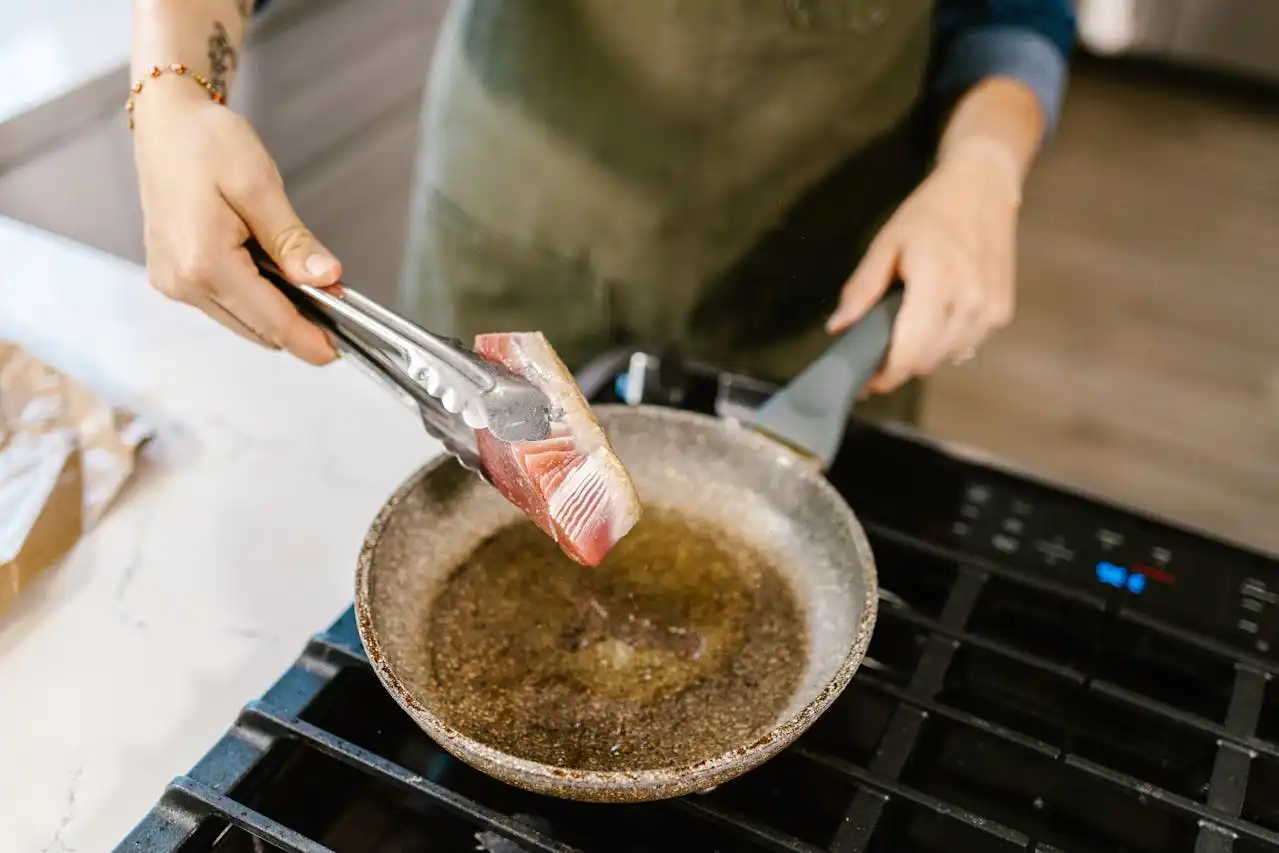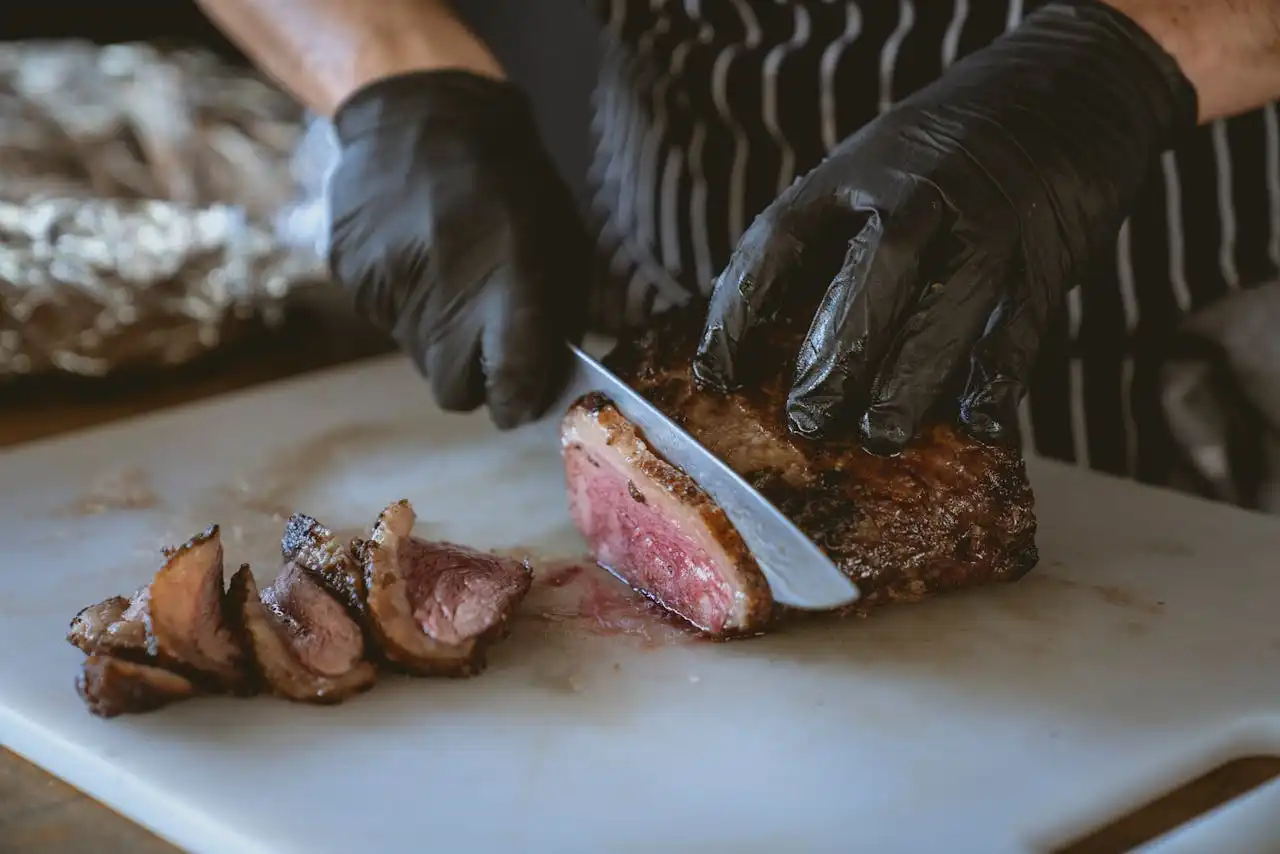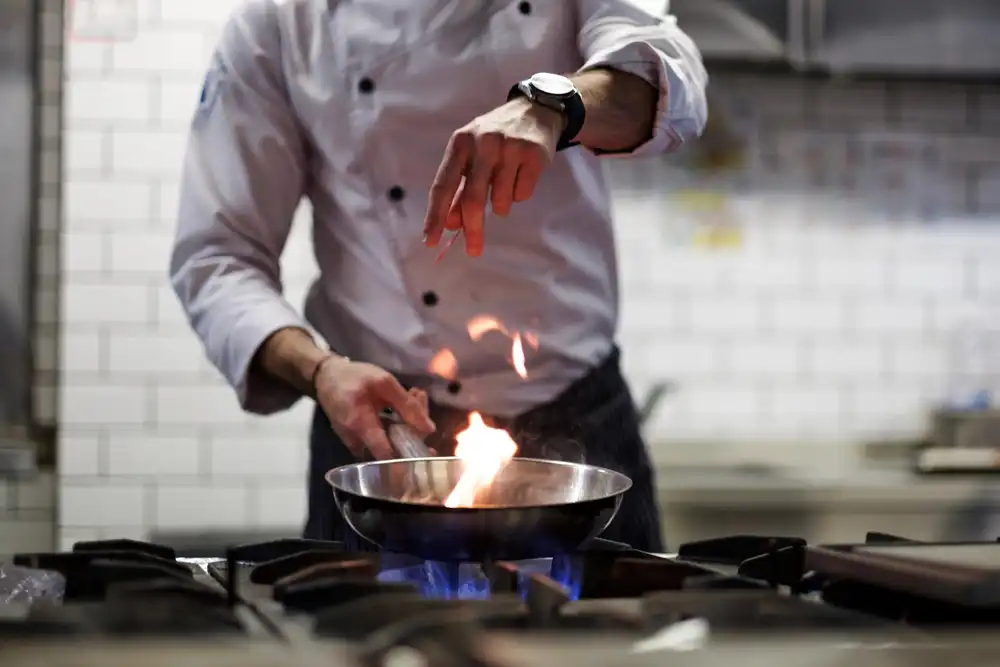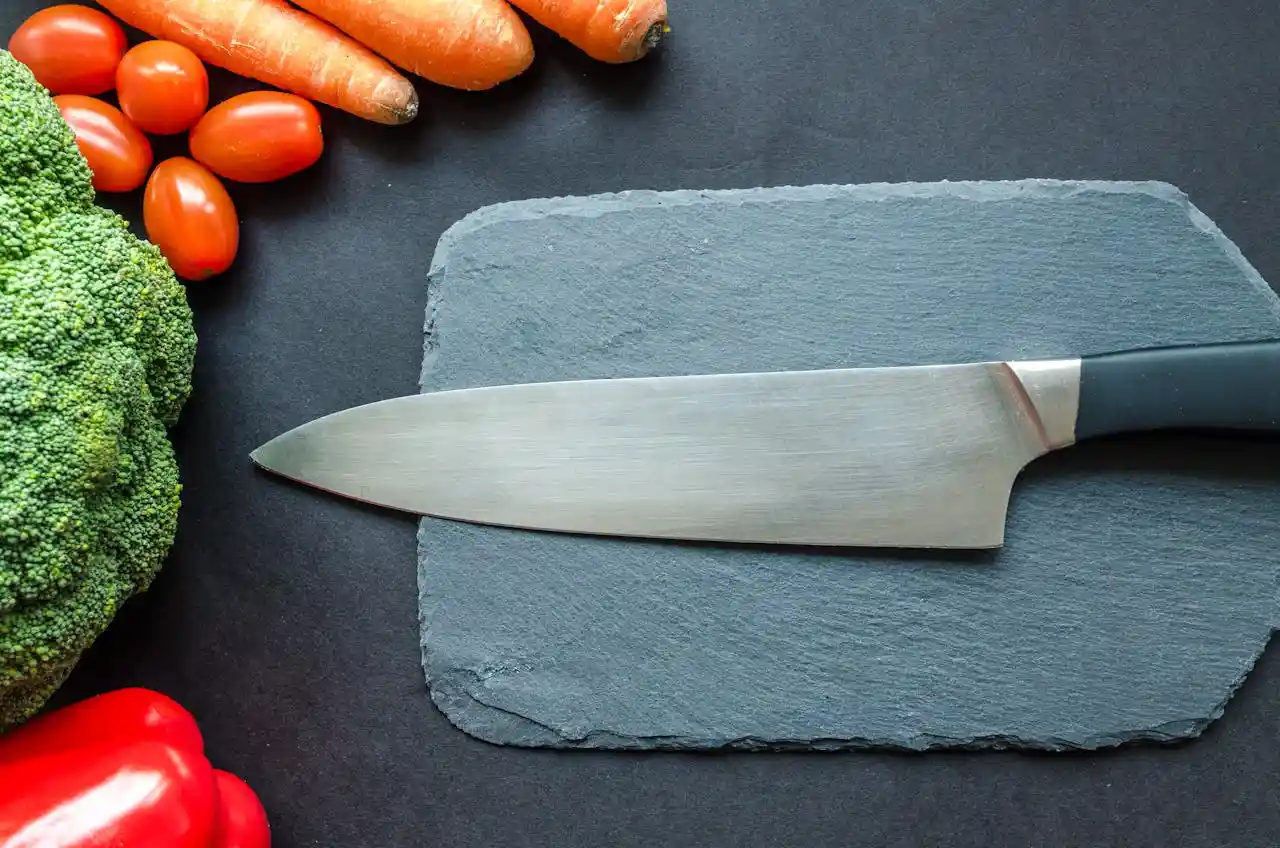How to Become a Private Chef
Wanting more control over your schedule and work-life balance? Becoming a private chef might be the perfect fit for you. With a projected growth rate of 8.3% through 2032, now is the time to start your career as a private chef.
loading...

If you are very sure about your cooking abilities — whether you've been a chef in a restaurant or acquired your skills through your personal efforts — you may be thinking how to become a private chef and offering your skills in the homes of clients. If that's you, then a career as a private chef might be just right for you.
But what does it mean to be a “private chef”? How much do private chefs make? How does someone get started? What about clients — how do you find them?
We'll get into all of that, but here's the first thing to know about being a private chef: it is much more than just cooking good food. All private chefs might be great cooks, but not all great cooks can become private chefs. It takes a special kind of person to be a private chef.
As stated by the U.S. Bureau of Labor Statistics, the number of jobs for private chefs (sometimes called personal chefs) is expected to increase by 8.3% from 2022 to 2032, which is faster than the average for most occupations—making this an excellent career direction for qualified cooks who are seeking more control over their work.
If you have given serious thought how to become a private chef, we'll give you all the basic info that you'll need to consider and not waste your time with fluff such as basic knife-holding skills — that's important stuff, no doubt, but we'll save that for a different audience.
Let's begin!
What kind of cooks would do well as private chefs?
Great cooks might not be great private chefs. In a restaurant, people work as a team whereas, as a private chef, one works independently yet takes on more responsibilities.
You're the whole operation.
As a private chef, the following is done by you:
Your own boss.
Your own scheduler.
Your own grocery shopper.
Your own marketer and brand.
Your own accountant and business manager.
Being self-motivated and having good time management skills are key to success. Administrative tasks like accounting may be not be your strong suit, if at all, but you need to address it or outsource it.
As a private chef, you are not just running a business — you are the business.
Personality Types That Thrive
The following traits make for good private chefs:
Independent and proactive – One creates a prep list and decides when to show up.
Personable/professional — You'll be working inside people's homes. You need to know how to be warm without being intrusive, confident without being overbearing.
Adaptable — Each client has his or her own preferences.
Pay attention to the smallest details. Endeavor to maintain clean surroundings and observe time schedules. No one else will do things for you on the team.
If you are one who takes pleasure in being creative by yourself, has an interest in establishing close connections with clients, as well as being responsible individually, then this job may be an excellent fit for you.

Restaurant Cook vs. Private Chef: Key Differences
| Aspect | Restaurant Cook | Private Chef |
|---|---|---|
| Work Environment | Works in a commercial kitchen with a team | Works in private clients' homes, often alone |
| Schedule | Fixed shifts, often nights/weekends | Variable schedule based on client needs and events |
| Creative Control | Limited—follows head chef's or restaurant's set menu | High—plans and customizes menus based on client preferences |
| Responsibilities | Focused on cooking and prep | Manages cooking, grocery shopping, menu planning, and cleanup |
| Client Interaction | Minimal or none | High—works directly with clients in personal settings |
| Income Structure | Hourly wage or salary, sometimes tips | Sets own rates, can earn more per client |
| Business Involvement | Not involved in marketing, finances, or bookings | Handles own marketing, scheduling, finances, and legal setup |
| Pace & Pressure | High-speed, volume-based service | Slower pace, but high expectations for quality and consistency |
| Job Security | More stable with benefits in larger establishments | Depends on client base and self-employment stability |
| Kitchen Resources | Professional-grade equipment and support | Must adapt to client's home kitchen and available tools |
How Much Do Private Chefs Make?
The question you're probably asking yourself is, how much does a private chef make? To make things clear for the cooks, here is the thing: Yes, private chefs can earn good money. But that amount can change a lot based on where you are, your experience, and who you are cooking for. Although there are many factors, let us take a look at how much private chefs can earn in different parts of the U.S., according to ZipRecruiter data; you will have an idea of how much do private chefs make.
| City | Average Annual Salary |
|---|---|
| Los Angeles, CA | $97,392 |
| Spokane, WA | $70,448 |
| Tampa Bay, FL | $65,843 |
| Boston, MA | $98,191 |
| St. Louis, MO | $87,876 |
Chefs in smaller cities may earn less than their big city counterparts, but even in a smaller city, the annual income for a private chef is competitive compared to other service industries. Chefs in small cities earn less, but it's still decent money. The ability to pull down a livable and growth-oriented income can ease the transition of a chef/cook working in a restaurant to serving clients in their homes as a private chef.
What is the daily/weekly routine for a private chef?
Being a private chef can be both an exciting and rewarding job. After all, a private chef gets to know their individual customers as opposed to being kept apart from them in a restaurant. Private chefs can see first-hand how their work brings a level of satisfaction to a client and the client's family. But it is not like having a normal job. You have to do a lot of things at once. Time management is very important.

Daily Tasks: What a Single Day Might Look Like
| Time of Day | Activity |
|---|---|
| 7:30–9:00 AM | Check client communications, review menus for the day, finalize grocery list |
| 9:00–11:00 AM | Grocery shopping—farmers markets, specialty stores, and/or standard grocery stores |
| 11:00 AM–12:00 PM | Drive to the client's home, prep kitchen space, begin mise en place |
| 12:00–3:00 PM | Cook lunch and/or dinner (depending on agreement) and plate dishes as needed |
| 3:00–4:00 PM | Clean up kitchen, wash tools, pack leftovers (if any), and ensure everything is spotless |
| 4:00–5:00 PM | Log receipts, track hours, record invoices, respond to inquiries from other clients |
| Evening | Plan upcoming menus, handle social media or website updates, restock pantry (optional) |
You Are Your Own Boss
The preceding table shows what the daily routine might look like for a private chef with several clients. The schedule is flexible and can be adjusted based on the chef's preferences and the clients' needs. For example, some private chefs may choose to work longer hours on certain days to accommodate special events or dinner parties, while others may prefer to keep their hours shorter and focus on meal prep and grocery shopping.
Weekly Workflow: Planning for Multiple Clients
Private chefs will generally cook for more than one client on a weekly basis. Depending on the number of clients, a private chef might cook 2–4 days a week and do prep work on the other days. The following is a breakdown of a typical work week of a private chef
2–3 days per week: On-site cooking for Client A, including grocery shopping and clean-up.
1 day per week: Client B's meal prep service—cook multiple meals in one session
1 day per week: Admin tasks—bookkeeping, marketing, consultations, and sourcing ingredients.
1–2 evenings/week: Special dinner parties or event-based work (high-paying but time-intensive)

How to Save Time as a Private Chef
When handling multiple clients and planning for different meals, experienced private chefs know that efficiency is a cornerstone of their success. Here's how they maximize their time and get more productivity out of every task:
Combine grocery trips: Shop for all clients in one go by organizing items by location.
Keep to checklists: Make your usual lists for groceries, menus, and cleaning chores.
Plan admin time weekly: Reserve a low-cooking day for invoices, taxes, and follow-ups.
Prepare beforehand (if allowed): The night before, chop veggies, marinate meats, or measure spices in advance if clients permit.
Use automations: Employ tools like QuickBooks, Google Calendar, etc., to reduce repetitive work.

How to Handle Logistics as a Private Chef
The responsibilities of a private chef go beyond cooking. They include arranging kitchen tools, picking up groceries, organizing their workspace in the client's kitchen, and cleaning up the workspace before leaving the client's home. It may seem tedious but these tasks are essential for the success of your business.
Being a private chef also requires logistics — getting all of those groceries and your cooking equipment from your place (or the supermarket) to the kitchens of your clients.
You are now also a one-person moving operation.
Private chefs must take their equipment and ingredients because most home kitchens aren't properly equipped.
Here is what usually goes along with chefs:
Basic food preparation tools: knives, cutting boards, and various plates and bowls.
Pans, pots, mixing bowls, oils, vinegars, and spices.
Food
Cleaning materials.
Containment for leftovers or storage.
There is a lot to carry, which must be packed well and presented easily each time.
What kind of vehicle works best?
Of course, start with what is already available to you, which would be your own car, and determine from there if an upgrade in vehicle size is in order. After just a few trips, you will soon identify what works best for the job. Thing to be aware of and make note of:
Your car will be too packed. Be sure that things don't fall. The process of loading and unloading will drive you crazy.
Enough space for coolers, bins, and carts.
Easy parking in neighborhoods.
Multiple clients, dinner parties, or large meal prep will need to have all of the above considerations re-evaluated to accommodate greater demand and capacity requirements.
Your vehicle is a kitchen on wheels and is a reflection of who you are as a private chef. If clients might happen upon your vehicle and how you handle logistics, you'll want that they have a favorable impression of this space. Work on keeping it well organized and clean.

A chef's way of how to pack
Experienced private chefs handle packing of equipment and groceries like this:
Big transparent plastic boxes with lids for equipment, spices, and dry goods. Stackable and easy to wash.
A cooler for meat, dairy, and perishables.
In the trunk, have a rolling cart or dolly, especially for elevators or long driveways.
Mark everything: labeled bins, compartments in the cooler, and spice containers.
After each job, check what is missing so you won't forget things or run to the store.
Set up and pack in the same way each time. Doing so establishes a system that works for all your clients.
After the job: cleanup and reset
When the cooking’s done, there is still some work to do. This is what separates solid cooks from real professionals:
Wash, sanitize, and restock your gear immediately after each job. Don't leave it in the trunk or on the counter.
Track ingredient usage and receipts for accurate billing and taxes.
Keep notes about each client's kitchen setup (What tools do they have? Where do they store things? Are there any quirks about their space?).
If managing multiple clients, dedicate one bin per client to avoid cross-contamination and confusion.
The best private chefs treat logistics like mise en place: when everything has its place and purpose, workflow feels effortless—even while juggling multiple households.
How to Find Clients as a Private Chef
If you are a great cook, there are people out there who want to hire you. You need to know where to find them, how to talk about yourself, and what a feasible workload is for you each week.

Where do private chefs find their first clients?
You are looking for people who want to pay for a professional cook in their homes. This could be families with the financial means to outsource familial tasks such as cooking, busy workers, health-conscious individuals, or those on special diets.
Here are some of the best ways to begin:
1. Word-of-Mouth
This is still the top way private chefs get business. Tell everyone you know about your cooking services — friends, past co-workers, old restaurant customers, people from your gym, trainers, yoga teachers, and even your barber. You want it to be you who comes to mind when someone thinks of a family that needs help in the kitchen and can benefit from the services of a private chef such as yourself.
2. Local Facebook and neighborhood groups
Upscale neighborhoods on Facebook and platforms such as Nextdoor(a neighborhood-based social network where users can promote their services directly to local residents through posts, recommendations, and a free business page) offer lots of possibilities. Introduce yourself on these or similar platforms, and share some menu options or meal plans. As always, be friendly, professional, and responsive.
3. Partnerships with Health Professionals
Doctors, nutritionists, and trainers often have clients who wish to eat better but lack cooking time. Offer to help such professionals by having either the medical professional or their clients discuss with you known dietary requirements and then building a menu that fits within those requirements.
4. Chef Platforms and Apps
To no great surprise, there are many platforms and apps that connect chefs with clients. Some of these platforms are:
Although some of these sites may charge a fee, the benefit of getting leads who may become paying clients is a very good trade-off. This is a way to start while you develop your own clientele.
5. Instagram and a simple website
Looking for a low-barrier to entry in social media to get the word out on your skills as a private chef? Open or use your Instagram account to post photos of your dishes. You're not trying to be an “influencer” so no need to use your time to build up a legion of followers. Just post well lit and in-focus photos of you cooking, some behind-the-scenes shots, and if possible, photos of folks enjoying your dishes. A great many of us “eat with our eyes,” so posting photos of your food on a site like Instagram is a great way to show off your skills. This will help potential clients feel comfortable with what you can do in the kitchen.

How Many Clients Can a Private Chef Handle Each Week?
This depends on your services, travel time, and how much you want to work. Unlike restaurants, where your shift is set, you now manage your own time — and overbooking is a real risk.
Let's break it down by service type:
| Service Type | Weekly Capacity |
|---|---|
| Weekly Meal Prep (in-home) | 3–6 clients per week (1-2 clients per day) |
| Daily In-Home Chef Service | 1–2 households (full-time style) |
| Dinner Parties/Special Events | 1–3 per week |
The above table shows what is a reasonable workload for a private chef. It is possible to increase capacity, but you'll want to keep certain factors in mind that can affect your ability to take on more clients.
Let's take a look at some of these factors.
Things That Affect Your Capacity:
Travel Time
Even 30 minutes each way adds up quickly.
Client Kitchen Setup:
Some kitchens are smooth. Others require extra setup and teardown.
Cleaning Time:
After cooking, you must clean your tools and workspace.
Admin Time:
Invoicing, menu planning, and communication take up a few hours weekly.
Grocery Shopping:
If you’re shopping fresh for each client, that’s time-consuming, too.
If you’re solo and want to be a full-time private chef, start with one or two clients per week. As you get used to it, you can take on four to six clients a week.
For each client, time how long you spend on the cooking, shopping, and other tasks. This can help you make things faster. You will find out how many clients you can handle without being overly fatigued.
Are there any associations that a private chef can join to gain credibility in the field?
The United States Personal Chef Association (USPCA) is known for being a reputable association for private chefs. If you're looking into how to become a private chef, then by joining the USPCA, you can gain credibility in your field. You will have the opportunity to get certified, which will make clients trust you more. You will also get access to business resources, marketing tools, and the chance to network with other chefs. These things can help you grow your client base and position yourself as a professional private chef.

Final Thoughts
Being a private chef can be rewarding, but it's not just about cooking: you need to build understanding with clients too. New private chefs should avoid overloading their schedules. Find your own rhythm and manage work well to avoid burning out.
You need to be organized, not just in your cooking activities, but also in managing clients' preferences, as well as keeping kitchen tools ready to serve.
Patience matters — earlier clients won't always be the big ones, but positive feedback will help establish your portfolio gradually. Success depends on business management and professionalism as much as great food preparation skills.
©2025 Cocina Digital Hospitality Group, Inc. All rights reserved.
No part of this publication may be reproduced, stored in a retrieval system, or transmitted in any form or by any means, electronic, mechanical, photocopying, recording, or otherwise, without the prior written permission of the publisher.
We use cookies to enable you to use our site, understand how you use our site, and improve your overall experience.
Cookies allow us to personalize content, track which pages are most popular and least popular, and provide advertising that may be relevant to you.
Please note that cookies that are essential to the proper functioning of the site are required and cannot be disabled.
They are usually only set in response to actions made by you which amount to remembering your settings, a request for services, such as setting your privacy preferences, logging in, or filling in forms.
As such, they are the only cookies that are enabled by default.
You can set your browser to block or alert you about these cookies.
By continuing to use our site, you accept our use of cookies.